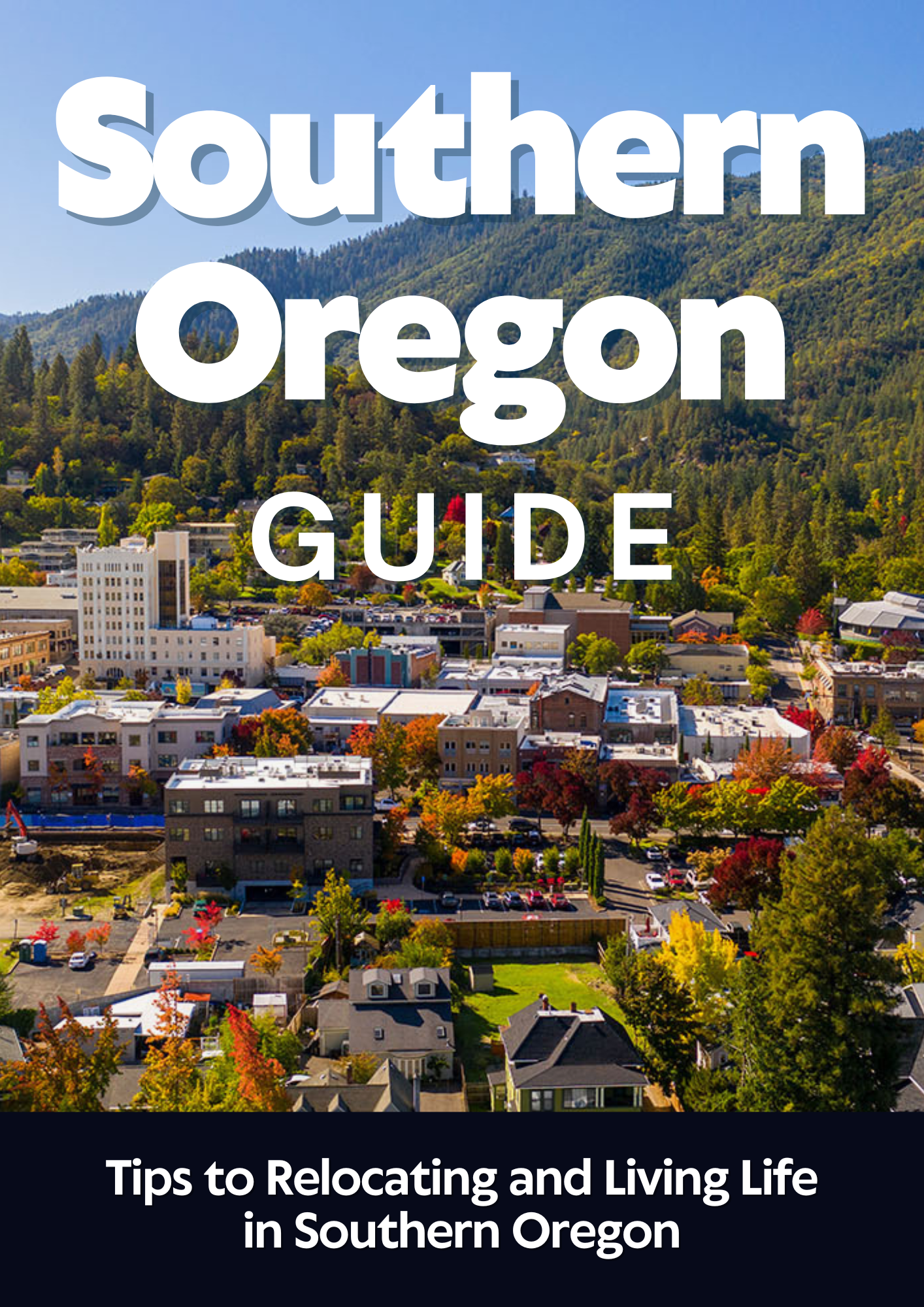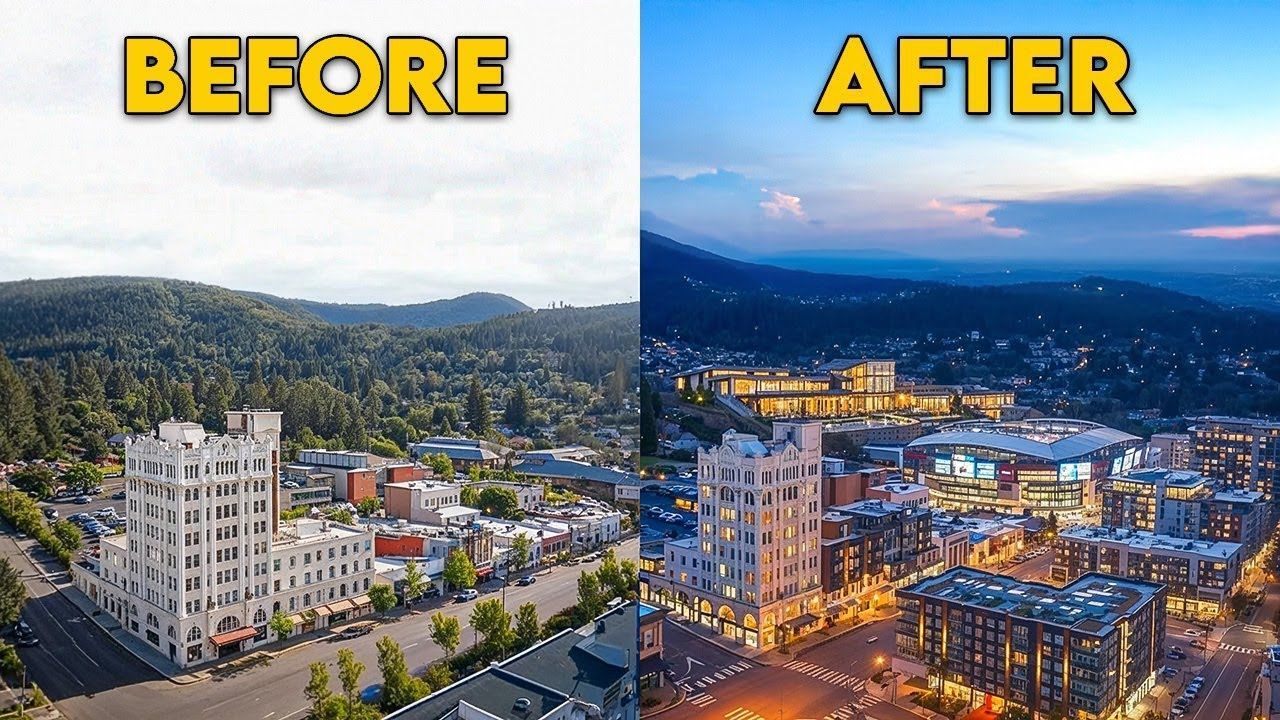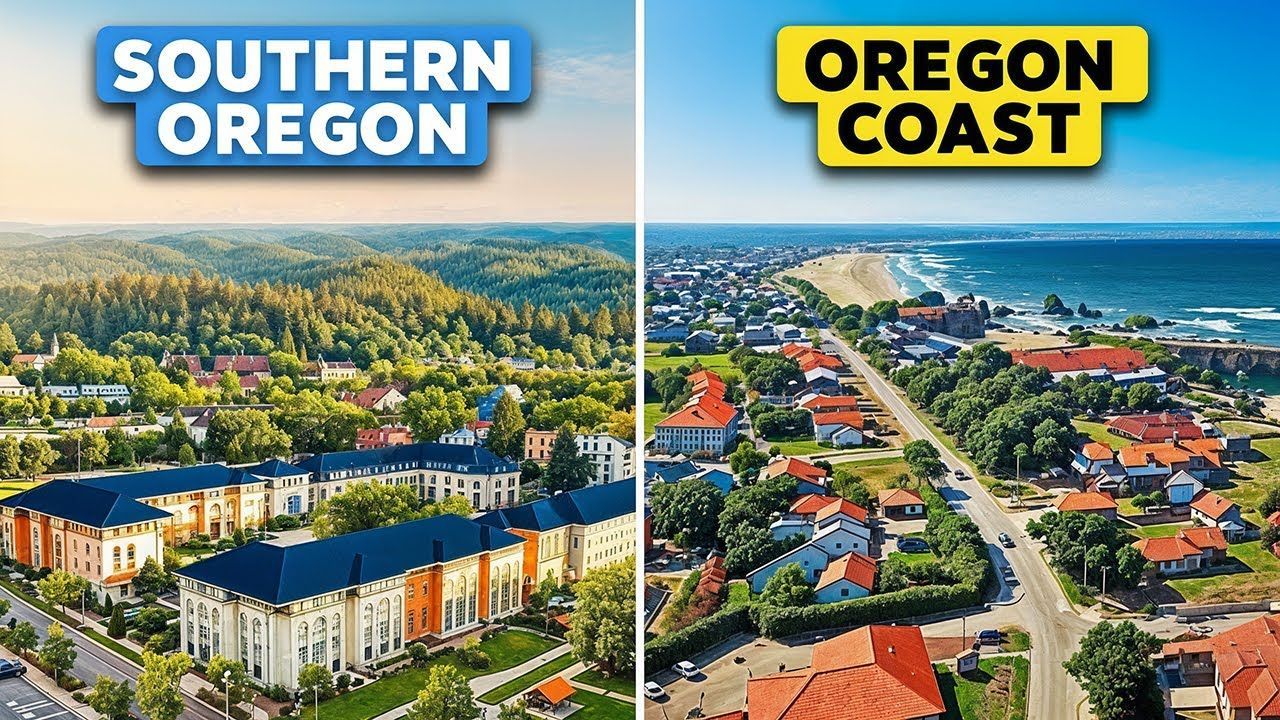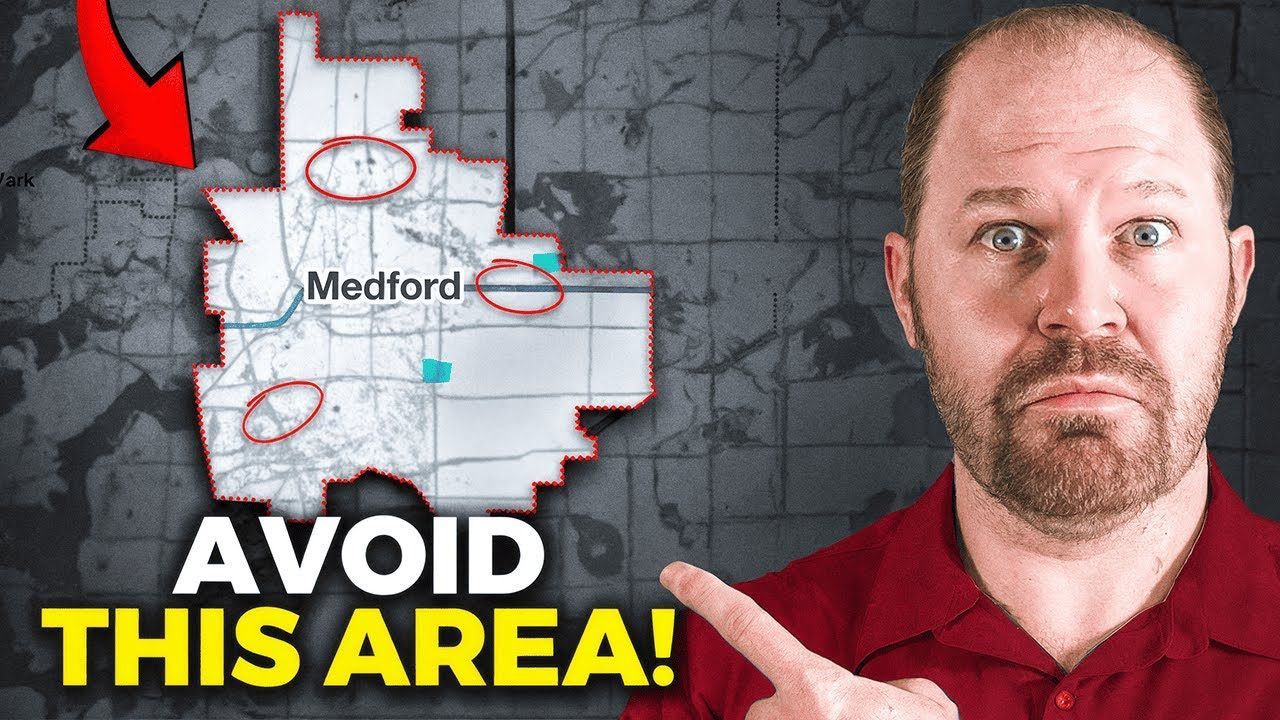Don't Move Here! Southern Oregon Neighborhoods to AVOID!
If you are seriously considering moving to Southern Oregon, it helps to know the parts of the region that demand a little more caution and research. Moving to Southern Oregon can be incredibly rewarding: great outdoors, lower housing costs in places, and small-town character. But not every neighborhood is created equal. This guide draws on long-term local experience to highlight specific neighborhoods and towns where buyers, renters, and retirees should pause, look closer, and think twice before committing.
Table of Contents
- Introduction: What to Know Before Moving to Southern Oregon
- Moving to Southern Oregon: What to Look for in West Medford
- Moving to Southern Oregon: Hawthorne Park and the Bear Creek Greenway Area
- Moving to Southern Oregon on a Budget: White City Pros and Cons
- Rural Living When Moving to Southern Oregon: Cave Junction
- Coastal Trade-Offs When Moving to Southern Oregon: Brookings and the Southern Oregon Coast
- Moving to Southern Oregon for Affordability: Life in Klamath Falls
- Rogue Valley Overview: How to Decide Where to Live When Moving to Southern Oregon
- Final Thoughts on Moving to Southern Oregon Safely and Smartly
Introduction: What to Know Before Moving to Southern Oregon
Moving to Southern Oregon requires balancing lifestyle expectations with practical trade-offs like safety, services, and commute times. Below I walk through the main areas I suggest researching more thoroughly, what makes them less desirable for some, and which corners inside each place still offer value if you know where to look.
VIEW HOMES FOR SALE IN SOUTHERN OREGON
Moving to Southern Oregon: What to Look for in West Medford
West Medford is one of those neighborhoods people ask about the most. If you are moving to Southern Oregon and want city access without a high price tag, West Medford will show up on listings—and for good reasons and some drawbacks.
On the positive side, West Medford is part of the original town core. It has historic cottages and small lots close to downtown amenities. Those smaller homes can be charming and offer a lower entry price compared with other parts of the Rogue Valley. But there are real factors that affect desirability.
- Older housing stock. Many homes are original builds and smaller in size.
- Proximity to social services and public institutions. Parks, shelters, the courthouse, and juvenile centers are nearby, which increases visible street activity and can influence perceptions of safety.
- Crime concentration. Local crime reports and community conversations often point to parts of West Medford having higher incident rates than surrounding neighborhoods.
For buyers who are strictly budget-driven, West Medford can be a smart move. If you are moving to Southern Oregon looking for a place in the mid 200s to 300s, you will find pockets that represent strong value. But if you prioritize long-term resale, quiet streets, and consistent neighborhood upkeep, you should proceed with caution or narrow your search to specific streets that are known to be well maintained.
VIEW HOMES FOR SALE IN MEDFORD, OREGON
Moving to Southern Oregon: Hawthorne Park and the Bear Creek Greenway Area
The Hawthorne Park corridor is another area to study closely when moving to Southern Oregon. The Bear Creek Greenway runs through this zone, and while the greenway is a great amenity, it has also become a corridor where unhoused camping and related activity are more common.
That concentration of activity has led many people to consider the Hawthorne area less desirable. There have been high-profile incidents and community concern about crime and safety around parts of the greenway. Still, this area is not uniformly bad.
There are historic districts and beautifully maintained streets just blocks away from the park. If you are moving to Southern Oregon and want access to Medford’s restaurants and walkability, target the pockets with strong HOA involvement or established historic designations. Conversely, choose caution when looking at homes directly adjacent to the greenway or the park if safety and quiet are priorities.
An important consideration: redevelopment is on the table. City leaders have started an exploratory process for a Creekside quarter redevelopment that could transform the area significantly. If you are considering the Hawthorne area as an investment, this potential change could create upside—but it is speculative and may take time to materialize.
Moving to Southern Oregon on a Budget: White City Pros and Cons
White City is frequently described as one of the more affordable communities in the region. If moving to Southern Oregon on a strict budget, White City often appears on your radar. It has strengths and trade-offs that are important to understand.
Affordability in White City comes from a mix of housing types, including a number of mobile home parks. In some neighborhoods, you will see cluttered yards, trailers, and campus-like concentrations of older units. Graffiti and maintenance variation are visible in places. Those visual signals can affect neighbors’ quality of life and residential pride, and they also tend to depress property values.
That said, White City has well-kept enclaves—townhouses and newer developments—that offer clean yards and thoughtful landscaping. If you are moving to Southern Oregon and seeking lower prices without sacrificing quality, focus on these pockets. They tend to have better long-term resale potential and a quieter feel.
Rural Living When Moving to Southern Oregon: Cave Junction
Cave Junction often makes lists of places people should research before moving. Historically, the town developed a reputation during the cannabis boom era and for stretches of time felt less policed and more isolated than the valley towns.
The town sits along Highway 199, a heavily traveled route that connects the valley with the coast, so pass-through traffic is part of daily life. Cave Junction is more wooded and feels rural compared with White City. That appeals to many, but it also means services, retail, and some medical care are farther away.
Cave Junction is changing. New subdivisions like Pomeroy River Estates and Pomeroy View offer modern, single-level homes at price points that stretch your dollar further than nearby Grants Pass. If you are moving to Southern Oregon and want a lower-cost home on a larger lot, Cave Junction is worth a look. The trade-off is the commute: expect a 35 to 45 minute, winding drive to reach larger hospitals, big-box stores, and major employers in Grants Pass or Medford.

Coastal Trade-Offs When Moving to Southern Oregon: Brookings and the Southern Oregon Coast
The coastal towns between Gold Beach and Brookings are scenic and excellent for outdoor recreation, but they are a very different proposition when moving to Southern Oregon full time.
Brookings has a lot to offer for people who love fishing, seafood, and coastal access. It has some decent shopping and a handful of restaurants that stand out. But living on the southern Oregon coast comes with significant compromises:
- Weather. The coast is often cool, gray, and drizzly for much of the year.
- Isolation. Major hospitals and specialized services are often a two and a half hour drive away.
- Lack of urgency medical infrastructure. Local medical centers tend to stabilize rather than handle complex emergencies.
If you are moving to Southern Oregon and want a coastal lifestyle, spend extended time in Brookings before committing. Many people find it perfect as a vacation base or seasonal retreat. For retirees who prioritize proximity to medical services, however, the coast can be a difficult fit.
Moving to Southern Oregon for Affordability: Life in Klamath Falls
Klamath Falls draws interest due to lower housing costs and an agricultural economy that supports year-round jobs. When moving to Southern Oregon and comparing value per dollar, Klamath Falls often looks attractive on paper.
Klamath is high desert: colder winters, more snow, and different vegetation than the Rogue Valley. The community features agriculture, potato farms, dairies, and supporting industries. Local anchors like Klamath’s healthcare facilities, Oregon Tech, and Kingsley Field for the Air National Guard provide employment stability.
Quality of life here depends on priorities. If you want affordable land, a smaller town tempo, and outdoor pursuits such as fishing and hunting, Klamath can be a good fit. If you prefer mild winters, proximity to valley amenities, and a larger local job market, Klamath may not be the best match.
Rogue Valley Overview: How to Decide Where to Live When Moving to Southern Oregon
The Rogue Valley (the corridor roughly between Ashland and Grants Pass) is the most common destination for people moving to Southern Oregon, and for good reason. It blends services, access to Medford and Grants Pass, and diverse neighborhood options. But even inside the Rogue Valley there are distinct micro-markets with pros and cons.
When deciding where to live in the Rogue Valley, weigh these factors:
- Commute and access. How often do you need access to specialty medical care, a major airport, or big-box retail?
- Neighborhood feel. Do you prefer historic cottages, suburban subdivisions, or rural acreage?
- Price versus upkeep. Cheaper homes often need more repairs. Factor renovation cost and time into any low-price purchase.
- Investment prospects. Areas slated for redevelopment can offer ups ide but come with uncertainty and timing risk.
Moving to Southern Oregon means choosing trade-offs. You can find excellent value and lifestyle alignment if you map your priorities honestly and visit neighborhoods at different times of the day. Neighborhoods I covered here are not uniformly unlivable. Rather, they are places where extra due diligence will save you from an unpleasant surprise.

Search For Homes on My Website
FAQs About Moving to Southern Oregon and Avoiding Common Mistakes
What are the main reasons to avoid certain neighborhoods when moving to Southern Oregon
Common reasons include proximity to concentrated social services or corridors of unhoused camping, visible property neglect that affects resale, limited local medical infrastructure, and long commutes to hospitals and major services. Each factor changes how residents experience the neighborhood.
Are there safe pockets within the areas you caution against when moving to Southern Oregon
Yes. Many of the neighborhoods discussed contain well-kept pockets, newer developments, or historic districts with strong pride of ownership. If you see warning signs on a block, look a couple streets over—you may find quiet, maintained properties that represent good value.
Is being near the coast a deal breaker for retirees moving to Southern Oregon
Not necessarily, but retirees should evaluate healthcare proximity very carefully. Coastal towns offer scenic beauty and recreation but often lack trauma-capable hospitals and specialists. Spend extended time in a coastal town before committing, and have a plan for medical transport and emergencies.
Can areas like Hawthorne become good investments after redevelopment?
Possibly. Redevelopment projects can uplift an area and increase demand. However, timelines are uncertain and projects can change. If you are considering an investment, evaluate the local plan details, support from city leadership, and how long you can hold the property if appreciation takes time.
How should I approach house hunting when moving to Southern Oregon
Visit neighborhoods multiple times, including at night and on weekends. Talk to neighbors, check local crime maps, and verify commute times to your important destinations. Work with a local agent who understands micro-markets so you can find pockets that match your priorities while avoiding pitfalls.
Final Thoughts on Moving to Southern Oregon Safely and Smartly
Moving to Southern Oregon can be a wonderful decision if you match your lifestyle priorities with the right neighborhood. Use caution in the neighborhoods outlined here, but keep an open mind—there are attractive, affordable options in each area if you know what to look for. If you need help buying a home, contact me — call or text 541-954-7758.
READ MORE: I’ve Lived in Southern Oregon for 10 Years - My Honest Thoughts

Buying Southern Oregon
At Buying Southern Oregon, we are a dynamic team dedicated to helping you achieve your real estate goals. Combining Brian Simmons’ deep market expertise and Josh Berman’s strong negotiation skills, we provide personalized service and local knowledge to ensure a seamless and rewarding experience. Whether you’re buying, selling, or relocating, we’re here to guide you every step of the way and make your Southern Oregon real estate journey a success.














